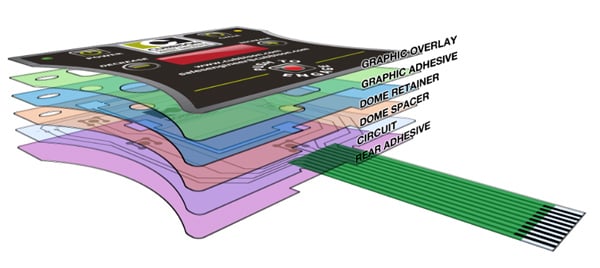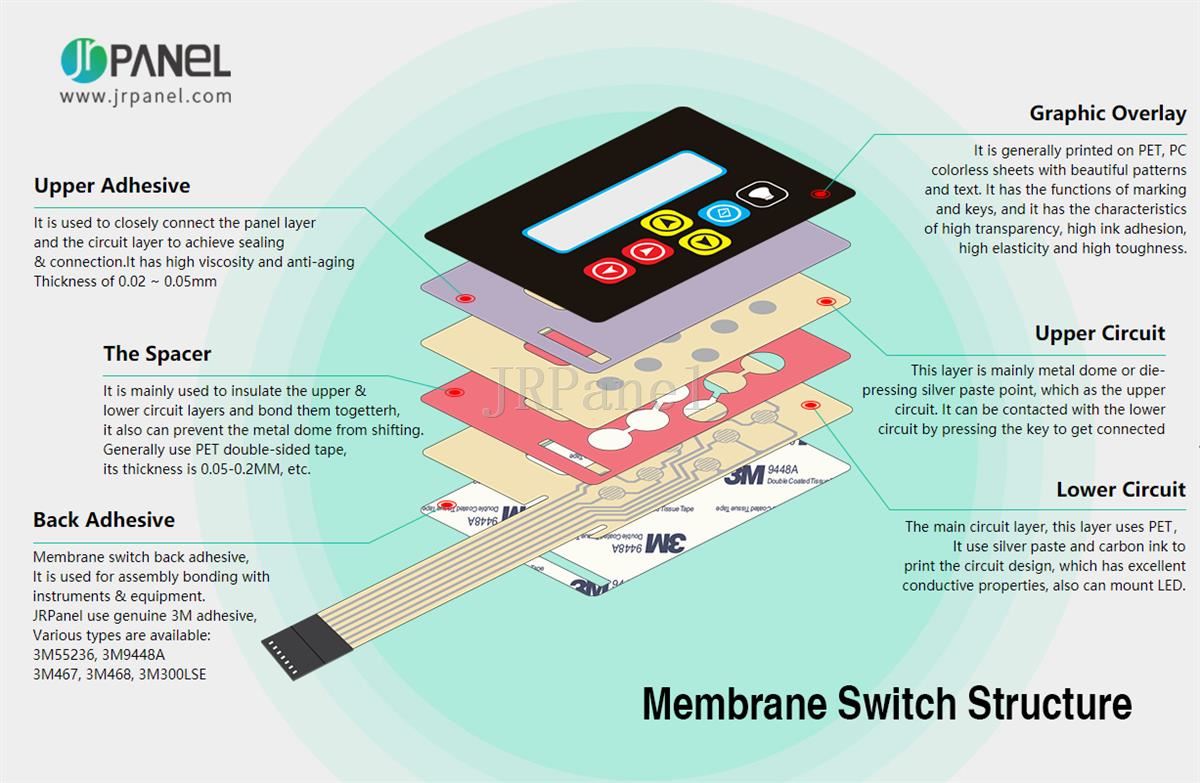Top Benefits of Integrating a Membrane Switch Into Your Electronic Devices
Top Benefits of Integrating a Membrane Switch Into Your Electronic Devices
Blog Article
Recognizing the Performance of Membrane Layer Switches for Customer Interface Gadget
The functionality of membrane layer switches over represents a substantial development in individual interface layout, integrating performance with aesthetic adaptability. As markets significantly prioritize individual experience, recognizing the nuances of membrane button innovation becomes necessary.
What Are Membrane Layer Switches?
Membrane layer buttons are innovative user interface tools that help with customer interaction with electronic devices. These versatile elements consist of numerous layers, consisting of a graphic overlay, spacer, and a printed circuit layer. The style permits a seamless combination right into different electronic gadgets, improving both the aesthetic and functional elements of interface.
Membrane switches are typically utilized in a wide variety of applications, from family devices to industrial equipment and clinical devices. Their construction commonly includes a thin account, making them an optimal option for portable designs. The responsive comments supplied by these switches can be engineered to meet details individual choices, ensuring efficient communication in between the user and the gadget.
Sturdiness is an additional significant advantage of membrane layer switches, as they are immune to dirt, dampness, and chemicals, which improves their life expectancy sought after atmospheres. In addition, these switches can be customized in terms of form, size, and graphic style, enabling branding and user-specific functions. On the whole, membrane layer changes represent a functional service for improving customer experience in electronic tools, combining capability with visual appeal in an efficient manner.
Just How Membrane Layer Switches Over Job
Operating on an uncomplicated concept, membrane switches make use of a split construction to register user input properly. Each switch contains multiple layers, including a printed circuit layer, a spacer layer, and a top visuals layer, which are designed to collaborate seamlessly. When a customer presses the top layer, it compresses the spacer layer, bringing the conductive components of the circuit layer into contact with each various other.
This get in touch with develops a closed circuit, signaling the tool to perform a details feature. The style permits various configurations, consisting of responsive comments, which can enhance the user experience by providing a physical feeling upon activation. The materials utilized in membrane layer switches typically consist of versatile substratums, such as polyester or polycarbonate, which ensure longevity and resilience versus damage.

Secret Benefits of Membrane Switches

An additional significant advantage is their density. Membrane buttons are thin and light-weight, which makes it possible for makers to conserve room in their devices without giving up performance. This attribute is particularly Extra resources useful in applications where weight and quantity are important considerations.
Additionally, membrane switches are immune to dust, moisture, and chemicals, enhancing their resilience. This resilience prolongs their life-span and reduces the need for frequent substitutes, leading to cost savings with time.
Furthermore, the responsive comments supplied by membrane layer switches can be enhanced to improve customer communication. They can include attributes such as increased switches or audible clicks, enhancing usability and user experience.
Applications Across Industries
Interface tools making use of membrane layer buttons are common in a wide array of industries, showcasing their adaptability and performance. Membrane Switch. In the medical market, membrane switches are important to tools such as analysis equipment and patient surveillance systems, where their sturdiness and simplicity of cleansing are essential for maintaining health standards. Likewise, in the automotive industry, these switches are used in control panel controls and infotainment systems, giving a streamlined and contemporary user interface for individuals.
Furthermore, the customer electronics sector benefits from membrane buttons in devices and portable tools, where compact style and easy to use user interfaces improve customer experience. Industrial applications additionally take advantage of membrane layer switches for control board in machinery and automation systems, emphasizing their robustness and resistance to severe environments.
In the aerospace and defense markets, membrane switches are utilized in cabin controls and equipment, where dependability and efficiency under extreme conditions are critical. Additionally, the video gaming industry increasingly integrates membrane layer switches in controllers and gallery machines, contributing to an engaging customer experience. Generally, the adaptability of membrane switches allows their widespread usage across numerous fields, highlighting their importance in modern-day interface design.
Future Fads in Membrane Change Technology

Furthermore, the usage of advanced materials, such as polycarbonate and polyester movies, is anticipated to increase, offering boosted resilience and resistance to ecological stress factors. These products add to the overall longevity of membrane buttons, making them appropriate for harsher commercial applications.
Moreover, the consolidation of wise innovation, consisting of IoT connection, will certainly enable membrane switches to interact with various other gadgets and systems, promoting an extra interactive user experience. This trend aligns with the growing demand for wise gadgets throughout different markets, from medical care to customer electronics.
Lastly, customization options are anticipated to expand, allowing manufacturers to create bespoke solutions tailored to specific customer demands and choices. These growths will certainly place membrane switches as vital elements in the advancement of interface innovation.
Final Thought
Finally, membrane changes represent a critical improvement in interface innovation, offering a reputable and flexible service for diverse electronic applications. Their split building and construction facilitates small style, while functions such as tactile comments enhance customer communication. The toughness against environmental factors better strengthens their utility across numerous markets. As advancements in product science and touch sensing modern news technologies continue, the functionality and applicability of membrane layer buttons are anticipated to increase, reinforcing their importance in contemporary electronic devices.
Report this page